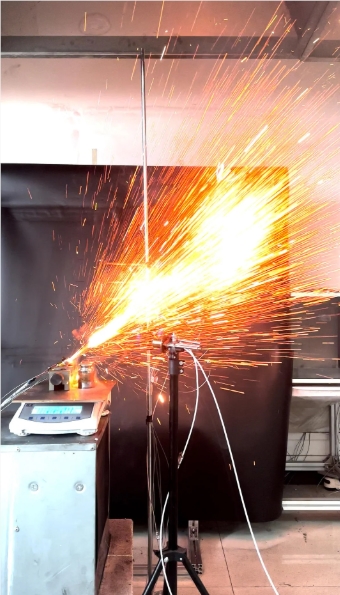In every corner of our lives, lithium-ion batteries are ubiquitous, found in devices ranging from smartphones and laptops to electric bicycles and electric vehicles. These batteries are popular due to their high energy density. However, when lithium-ion batteries overheat or are damaged, they can trigger a thermal runaway reaction, potentially leading to fires or explosions. Notably, in 2023, the New York City Fire Department reported 268 residential fires caused by electric bicycle batteries, resulting in 150 injuries and 18 fatalities. In light of the increasing fire risk, the research team at the National Institute of Standards and Technology (NIST) is working on developing a new technology that uses sound to detect lithium battery fires.

NIST researchers discovered that before a lithium-ion battery catches fire, a chemical reaction occurs inside the battery, leading to increased gas pressure and swelling of the battery casing. Many lithium-ion batteries are equipped with safety valves that burst and release gas when the internal pressure becomes too high, producing a sound similar to the “hiss” of opening a soda bottle. While watching videos of battery explosions, researchers noticed this sound and decided to investigate its feasibility further.
To train a machine learning algorithm to recognize this specific sound, researchers collaborated with a laboratory at Xi'an University of Science and Technology to record audio samples from 38 battery explosions. They adjusted the speed and pitch of these recordings to generate over 1,000 unique audio samples. After training, the algorithm achieved a recognition rate of 94%. Researchers successfully detected the sound of overheating batteries using microphones installed on cameras. To validate the algorithm's effectiveness, they conducted interference experiments with various noises, and the results showed that only a very few types of noise confused the detector.
Currently, the research team has presented their findings at the Asia-Pacific Fire Science and Technology Symposium and has applied for a patent. In the future, they plan to test more types of batteries and microphones to confirm the warning time for safety valve rupture, which typically occurs about two minutes before the battery fails. Ultimately, this technology aims to develop a new type of fire alarm that can be installed in homes, offices, and even warehouses and parking lots with a large number of batteries, providing early fire warnings to people.
Key Points:
🔥 The NIST research team has developed a sound-based fire warning technology for lithium batteries, using AI algorithms to identify the sound of safety valve rupture.
🔊 The trained algorithm achieves a recognition rate of 94%, maintaining efficient detection even in the presence of various noise interferences.
⏳ Future fire alarms are expected to provide about two minutes of advance warning, helping people escape in time.

